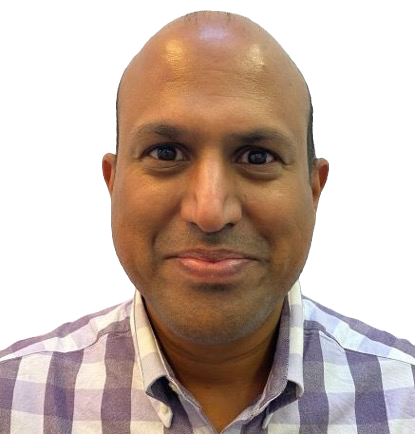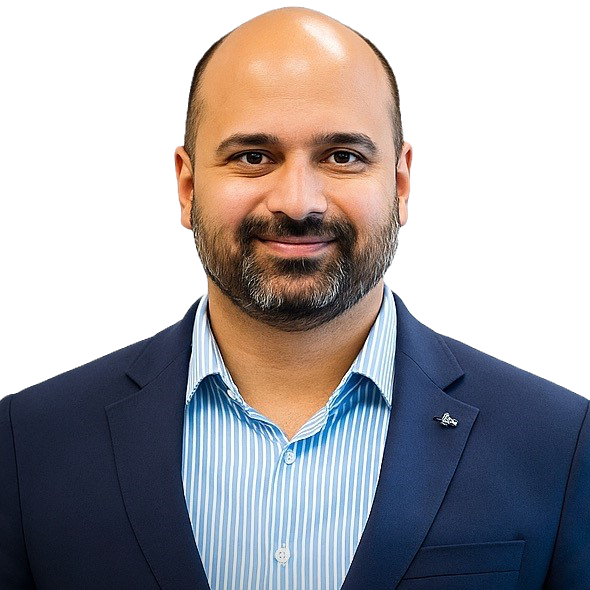Dr Shanker Vijay: Bridging the Gap Between Digital Innovation and Everyday Care
- Ross Fullerton
- Jul 18
- 4 min read
Updated: Aug 29

Dr Shanker Vijay, GP Digital Lead at NHS England's London region, shares his reflections on digital transformation in healthcare from early social media experiments to the future of AI.
For Dr Vijay the journey into digital health was anything but linear. A practising GP with a passion for technology, his career has unfolded across multiple levels of the NHS from local boroughs to regional strategy, giving him a rare, multi-layered view of how the system works, and how it sometimes doesn’t.
“I never planned this path,” he explains. “I was always interested in tech, even as a kid. But the turning point came around 2010 when I started exploring digital roles in a London borough. That led to experimenting with social media and YouTube - long before it was common in healthcare - which ended up opening all kinds of unexpected doors.”
Today, Dr Vijay operates at three levels: regionally with NHS England, closer to home with the North West London ICB, and at the borough level in Ealing. Crucially, he still sees patients. “That clinical role keeps me grounded. The higher up you go, the easier it is to lose sight of the realities on the ground. I’ve always believed: if you want real solutions, don’t look up - look down. That’s where the answers are.”
This blend of systems insight and street-level realism shapes his thinking around digital transformation. In his view, the values of the NHS: providing care regardless of wealth, reaching underserved populations, and making healthcare better for both patients and staff, are what make the work worthwhile.
One of his proudest moments? Uploading light-hearted but empowering YouTube videos with patients back in 2010. “It was early days for social media in healthcare, and seeing patients take ownership of their voice felt revolutionary however there have also been plenty of quieter wins such as improving safety and streamlining systems which haven’t been in the limelight.”
Despite the gains, he’s candid about the frustrations. Change in the NHS is still far too difficult, he says. “Even now, we’re tied up in loops of bureaucracy. The pandemic was the only time I saw real momentum. Barriers dropped, silos dissolved, and we just got on with it. It proved we can do it. Sadly, I think we’re already sliding back.”
One area he’s especially passionate about is implementation. Far too often, he says, digital initiatives are driven from the top down without proper thought given to how they’ll actually work. “We replicate processes endlessly - every region checking the same boxes. We need national solutions that are flexible but standardised. Do once, do well.”
He draws an architectural analogy: “Imagine you ask for a three-bedroom house. The plans go out, but they’re vague, just ‘three rooms and a door.’ So you get wildly different results. No windows, no plumbing, no power. Technically it meets the brief, but it’s unusable. That’s what we keep doing with our IT specs.”
The solution, he believes, lies in developing standards not just for infrastructure, but for user experience. “We need UI standards, design frameworks, not just APIs. It’s not enough to make things interoperable. They need to be intuitive, fast, and actually useful.”
This is particularly pressing in settings like community pharmacies, which he sees as essential but under-supported. “Pharmacies are often left behind. They’re small businesses, juggling multiple systems, yet we’re asking them to do more without giving them the right tools.”
He suggests adopting a GP-style IT model: centralised platforms, nationally supported infrastructure, and contracts that reflect real usage. “Without it, you get a patchwork of systems that don’t integrate, and staff wasting time copying and pasting between screens.”
That idea of time is a recurring theme. Dr Vijay describes general practice as a “Formula One race”, 10-minute consultations where every second counts. “If I can save a GP 10 seconds, that’s a win. It adds up. Pharmacies might be even more intense. They’re the pit crew, juggling customers and clinical tasks simultaneously. Their systems need to be fast, simple, and seamless.”
Looking ahead, it’s no surprise that AI is top of mind. But he sees it with a balanced lens. “Yes, it’s a double-edged sword. But if we get it right, AI can help reduce burnout, support decision-making, and improve productivity. We can’t be paralysed by fear. Humans make mistakes every day, we need to weigh AI risks against that reality.”
He sees the potential in tools like ambient voice tech, online consultations, and intelligent messaging systems, especially when used to assist rather than replace clinicians. “The second wave of digital transformation is about working smarter, not harder.”
Asked what advice he’d offer to those working in digital healthcare, Dr Vijay returns to a speech that’s shaped his outlook: Steve Jobs’ 2005 Stanford commencement address. “Jobs talked about joining the dots. How experiences that make no sense at the time can lead to something powerful later. That’s been true for me. I never had a master plan, but everything I did eventually connected.”
For those feeling uncertain or overwhelmed, he recommends watching that speech. “It reminds you to trust the process. Even if it’s not linear, it can still be meaningful.”
His parting thought captures both the optimism and the challenge of digital change in healthcare: “If digital transformation feels hard, that’s probably a good sign. If it’s too easy, maybe your ambitions are too small.”



